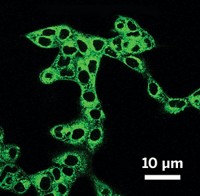Advertisement
Grab your lab coat. Let's get started
Welcome!
Welcome!
Create an account below to get 6 C&EN articles per month, receive newsletters and more - all free.
It seems this is your first time logging in online. Please enter the following information to continue.
As an ACS member you automatically get access to this site. All we need is few more details to create your reading experience.
Not you? Sign in with a different account.
Not you? Sign in with a different account.
ERROR 1
ERROR 1
ERROR 2
ERROR 2
ERROR 2
ERROR 2
ERROR 2
Password and Confirm password must match.
If you have an ACS member number, please enter it here so we can link this account to your membership. (optional)
ERROR 2
ACS values your privacy. By submitting your information, you are gaining access to C&EN and subscribing to our weekly newsletter. We use the information you provide to make your reading experience better, and we will never sell your data to third party members.
Analytical Chemistry
Tiny Particles Tested In Humans
Silica nanoparticles for imaging melanoma evaluated for safety
by Bethany Halford
November 3, 2014
| A version of this story appeared in
Volume 92, Issue 44
The nanoparticles known as C dots have been studied in humans, marking the first time this type of ultrasmall inorganic particle has made the leap from animal tests to people (Sci. Transl. Med. 2014, DOI: 10.1126/scitranslmed.3009524). C dots, known formally as Cornell dots for the university where they were first developed, consist of silica nanoparticles 6–7 nm in diameter. The nanoparticles encapsulate the fluorescent dye Cy5, which allows researchers to track them using fluorescence methods. The C dots have a coating of polyethylene glycol, which prevents them from getting caught in the liver. The radiolabeled cyclic peptide 124I-cRGDY also decorates the nanoparticle surface. The cyclic peptide targets integrin present in high concentration on certain cancer cells, and iodine-124 can be tracked using positron emission tomography (PET). Researchers led by Michelle S. Bradbury of Sloan Kettering Institute for Cancer Research and Ulrich Wiesner of Cornell University tested the C dots in five patients with terminal melanoma. They found that the particles were not toxic and were excreted intact by the kidneys and bladder, thanks to their small size.





Join the conversation
Contact the reporter
Submit a Letter to the Editor for publication
Engage with us on Twitter